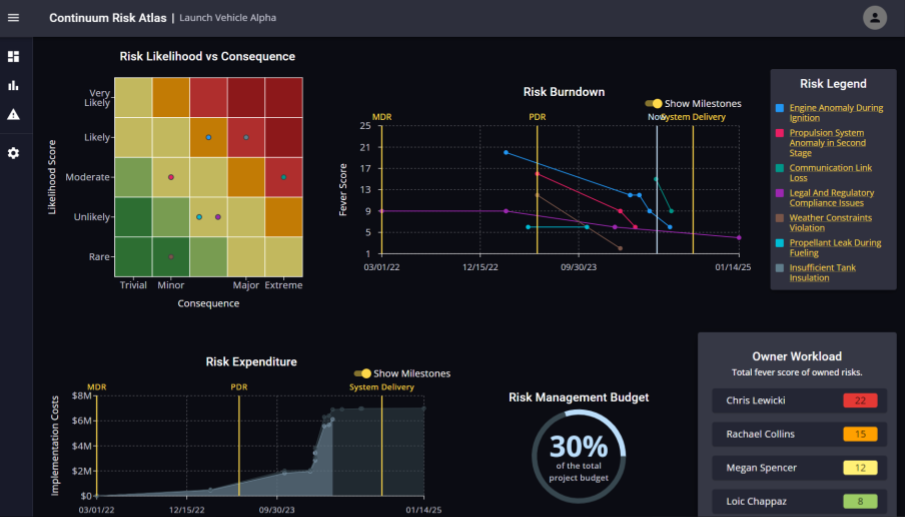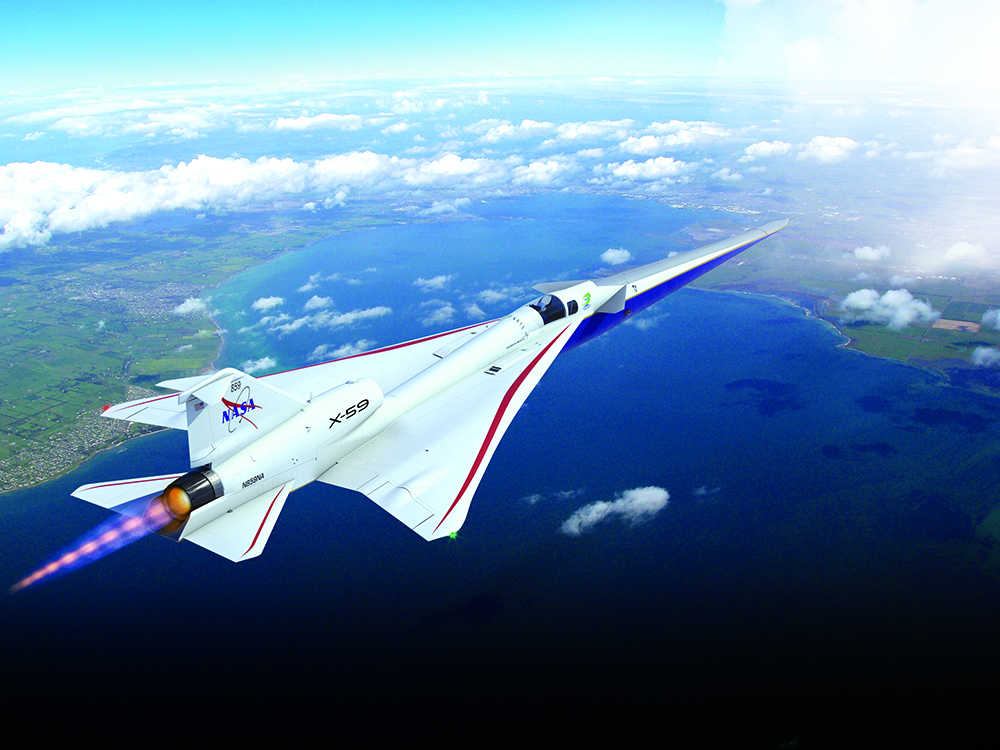
Flying (Not Quite) Blind
Subheadline
Ultra-high-definition video switcher for supersonic X-plane takes off in commercial aviation
Most pilots would be concerned if their plane didn’t have a front window. But Jim Less, NASA test pilot, is looking forward to flying the X-59 experimental plane. A new eXternal Vision System (XVS) replaces the pilot’s direct line of sight, and it can sometimes help pilots spot other aircraft faster than they could through a regular windshield, according to Less.
Two cameras, image-processing software, and a computing system with two processors bring together new and existing technologies to support an augmented reality display that “is going to be almost like looking out the windows,” said Less. And he should know as one of the crew using the XVS flight simulator during flight training.
The goal of the X-59 is to lower the sound of the sonic boom associated with traveling faster than the speed of sound. If successful, the test flights could lead the way to dramatically reducing flight times with the resumption of overland supersonic flight.
The sleek design of the aircraft includes a 38-foot nose that will help diminish the volume of the sonic boom to a thump. But it also means the pilot will sit closer to the middle of the plane without a front-facing windshield.
A critical piece of the innovative technology needed to enable an ultra-high-definition display was developed by Van Nuys, California-based Eon Instrumentation Inc. The DP-25 high-speed DisplayPort switcher delivers the video streams from the processor – linked to both the takeoff and landing and in-flight cameras – to a 4K monitor, that is, one that has about four times the resolution of traditional high definition.
As part of the XVS pallet, or “brain,” that routes the video, NASA specifications required the video switcher to communicate seamlessly with all system components, according to Kemper Kibler, NASA’s XVS lead hardware engineer. Switching channels could not cause a visible interruption, like it does on a television, and the switcher could add no more than a millisecond’s delay between the video processors and the pilot’s monitor, to keep display as close to real time as possible. The agency wanted to eliminate any lag time or disruption to maintain the pilot’s visibility.
“We needed the DP-25 to accept video from both XVS computers and route the active video to the monitor,” Kibler explained. The minimum requirement for the switch time was 16 milliseconds, but such hardware didn’t exist until Eon Instrumentation agreed to take on the challenge.
A longtime agency contractor, Eon was selected to create the part by NASA’s Langley Research Center in Hampton, Virginia. Although the agency would only purchase a few units, Jeff Norsen, president of Eon Instrumentation, saw the commercial potential. Even when NASA added a new requirement – to simultaneously send the video to real-time flight recorders for later review – the company was willing to invest its own internal funds to make it work.
In addition to switching between the two feeds in five milliseconds – the speed of a single honeybee wing flap – the device supports multiple recording technologies.
The X-59 hasn’t left the ground yet, but the company now includes the new high-speed DP-25 switcher and two other models built on the same technology, the VMS-22 and VMS-24 switchers, in its inventory. And commercial aviation companies are adding them to their aircraft.
An international helicopter manufacturer is using the switch to add a 4K video display to a number of its models, making it easier for pilots to see other aircraft in their airspace. These helicopters are used for emergency medical services, public services, offshore energy, commercial transport, and private aviation.
“Eon appreciates working with NASA in order to pioneer breaking-edge technologies made for rugged applications, and we’re willing to push boundaries in the avionics and aerospace industries, just as NASA does,” said Norsen.
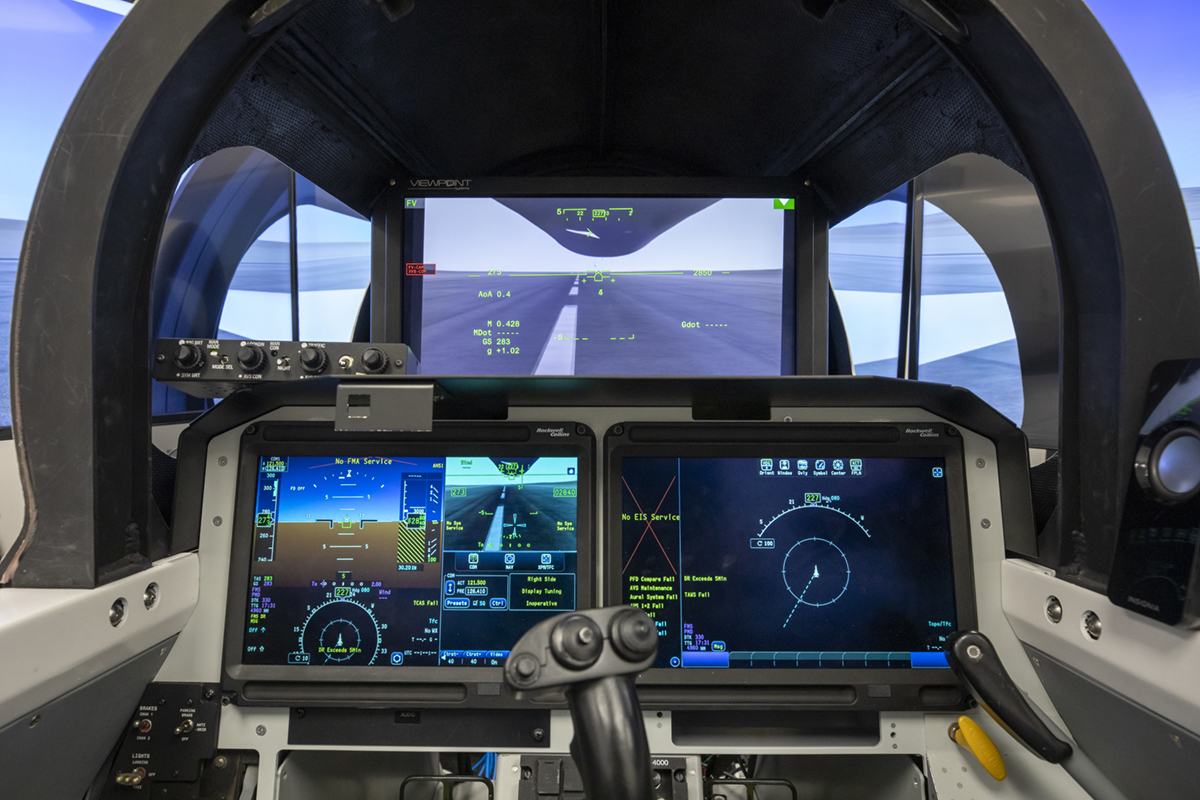
With no forward-facing windows, the pilot will rely on a digital display like the one in this rendering of the X-59 cockpit. A custom external vision system includes two cameras that will act as the pilot’s eyes. To meet NASA’s specifications, the company Eon Instrumentation had to create a display port switcher/converter capable of instantaneously switching between ultra-high-definition video feeds. With an overlay of important flight information, the pilot will have all the essential information on one display. Credit: Lockheed Martin Corporation
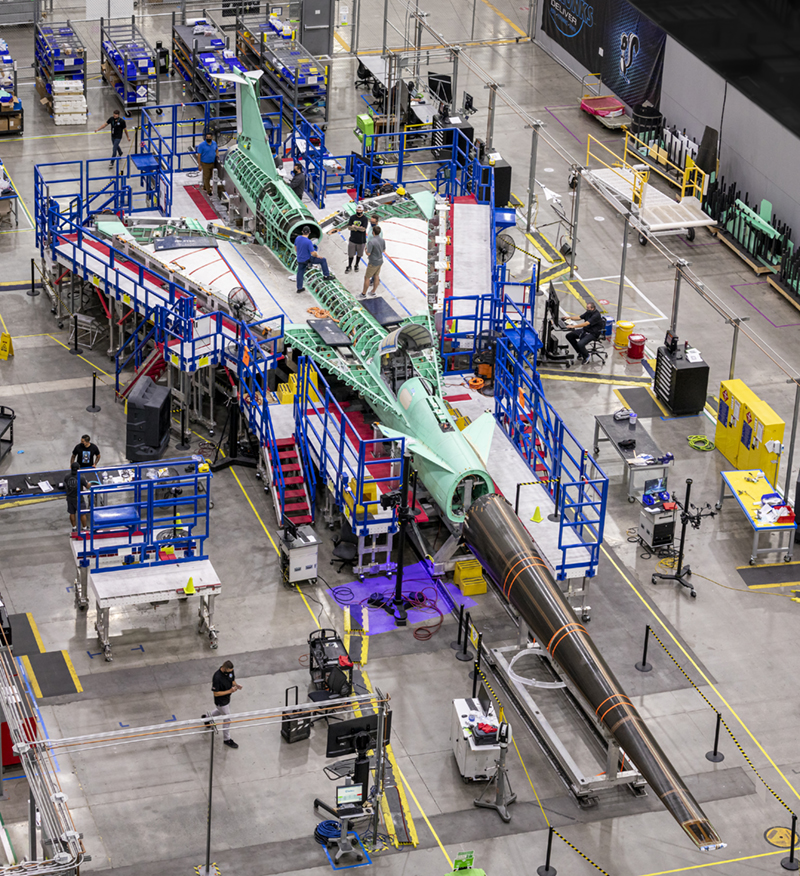
Lockheed Martin Corporation is building NASA’s X-59 aircraft, or X-plane, at its Skunk Works facility in Palmdale, California. The nose, shown here temporarily positioned at the front of the aircraft, makes up almost a third of the plane’s nearly 100-foot length and precludes a traditional windshield. Instead, the pilot will see through an ultra-high-definition video display. Credit: Lockheed Martin Corporation
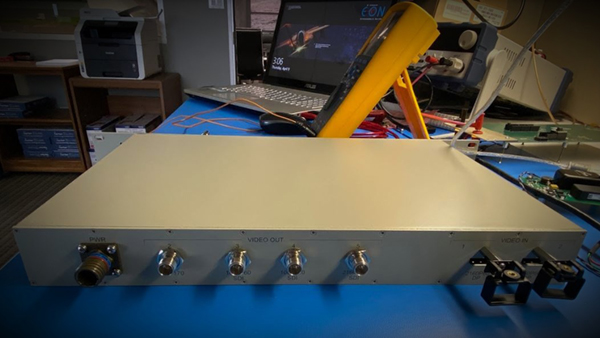
Eon Instrumentation created the DP-25 high-speed display port switcher for NASA’s supersonic X-59 plane, but helicopter manufacturers and others are now using the device to enable ultra-high-definition displays in their aircraft. Credit: Eon Instrumentation Inc.

The NASA Quiet Supersonic Technology Low-Boom Flight Demonstrator, also called the X-59, is designed to prove it’s possible to take the loud boom out of supersonic flight. The aircraft design changes the structure of the sound wave, making it more like a thump. This is one step toward removing the overland flight ban for planes traveling faster than the speed of sound. Credit: Lockheed Martin Corporation





